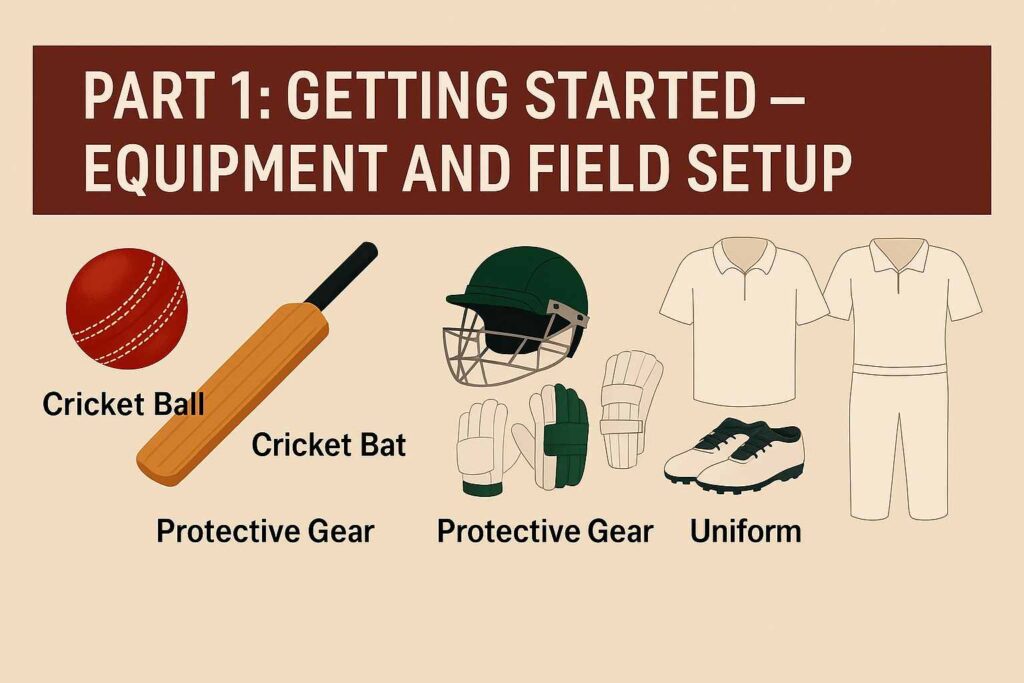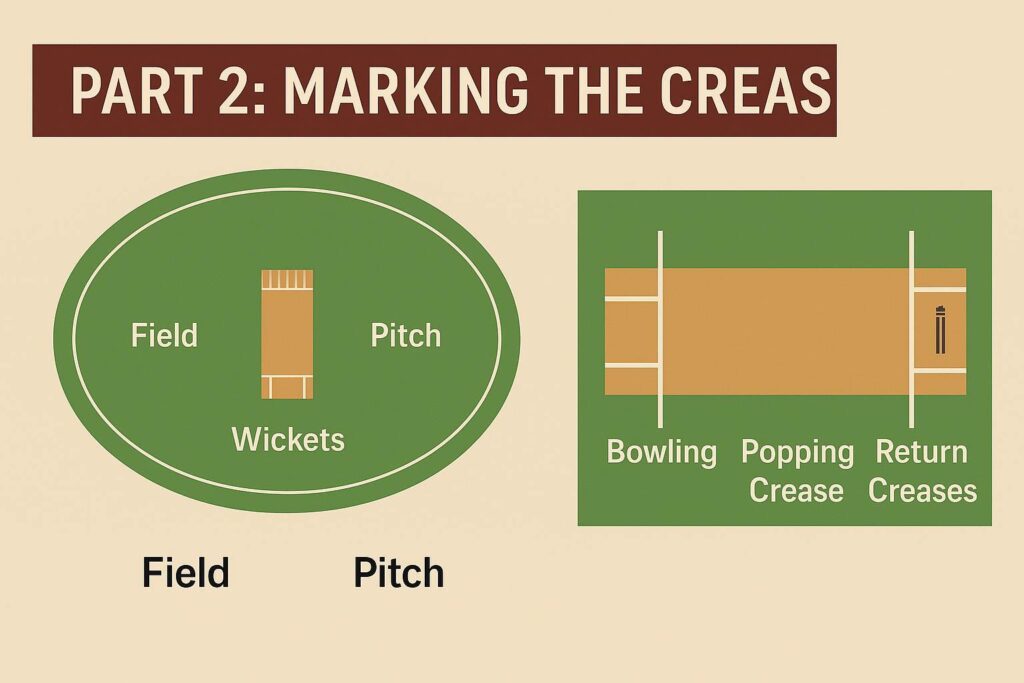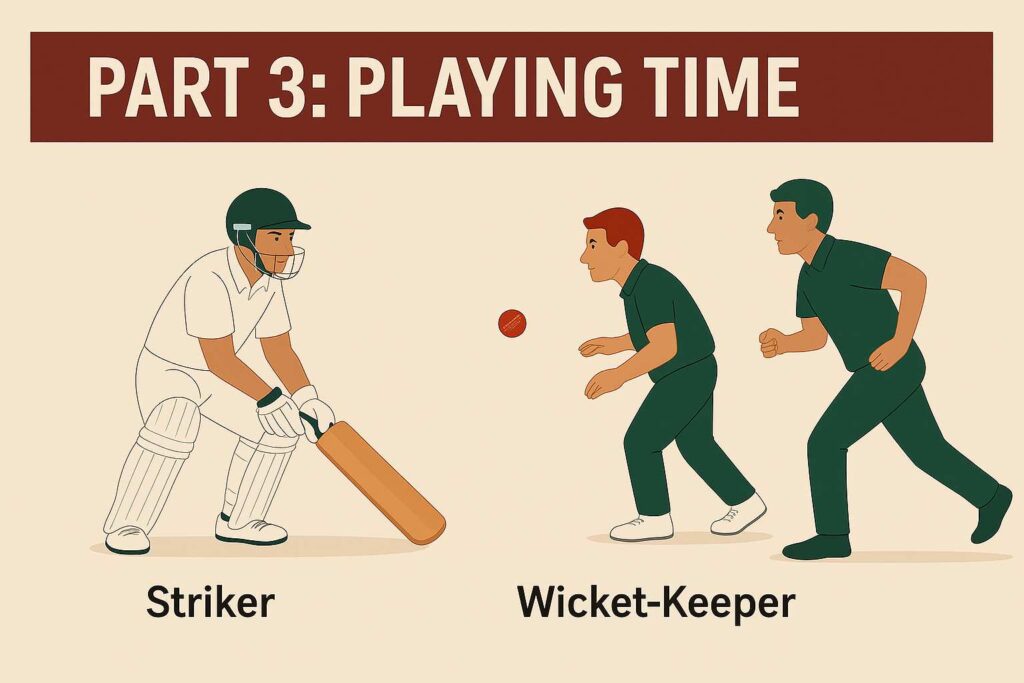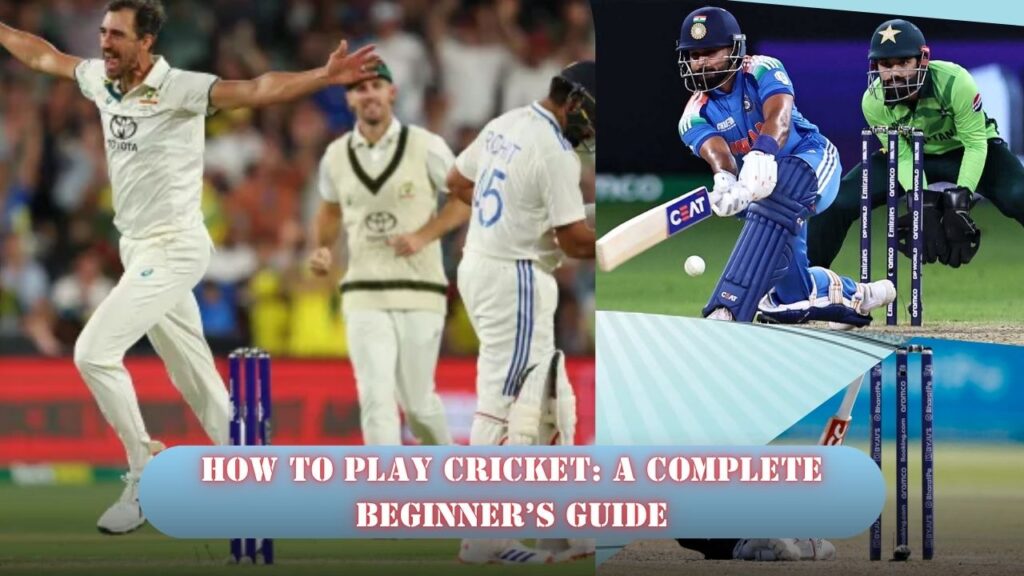Cricket is a globally cherished sport, passionately played and watched by millions—especially in countries like India, Pakistan, England, Australia, South Africa, and New Zealand. While it might seem complex at first glance, learning How to play cricket is both exciting and rewarding.
Whether you’re picking up a bat for the first time or simply curious about the rules, this guide will walk you through everything you need to know about how to play cricket—from setting up the field to mastering key techniques and understanding the core rules of the game.
Part 1: Getting Started – Equipment and Field Setup

1. Essential Equipment
To play cricket, certain gear is necessary to ensure both safety and proper gameplay. Here’s what you need:
- Cricket Ball: A hard, leather-covered ball, usually red for traditional formats or white for limited-overs matches.
- Cricket Bat: Made from willow wood, flat on one side and curved on the other. The striker must use the flat side to hit the ball.
- Wickets (Stumps and Bails): Each wicket is made of 3 vertical wooden stumps with 2 horizontal bails resting on top.
- Protective Gear: Batting pads, gloves, a helmet, and an abdominal guard are standard. The wicket-keeper also wears padded gloves and leg guards.
- Uniform: Teams usually wear colored clothing in shorter formats and white in Test matches. Spiked shoes help players grip the ground better.
2. Understanding the Cricket Field
Cricket is played on a large, oval-shaped grassy field with a 22-yard-long rectangular strip in the center called the pitch. This is where most of the action takes place.
- The Boundary: A line around the outer edge of the field marks the boundary. Hitting the ball past this line earns extra runs.
- The Pitch: The pitch has wickets at both ends and is where the bowler delivers the ball and the batsman tries to score.
3. Marking the Creases
Four important lines called creases help regulate gameplay:
- Bowling Crease: Where the bowler must deliver the ball from.
- Popping Crease: Defines the batsman’s safe zone. Stepping outside makes the batsman vulnerable to being run out or stumped.
- Return Creases: Run perpendicular to the popping crease and define where the bowler can place their feet.
4. Setting Up the Wickets
Each wicket comprises:
- 3 stumps placed vertically into the ground.
- 2 bails balanced on top.
- Wickets are 9 inches wide and 28.5 inches tall. They are set up at both ends of the pitch.
Part 2: Game Structure and Rules

1. Objective of the Game
The primary goal in cricket is for the batting team to score as many runs as possible, while the fielding team tries to get the batsmen out and restrict the number of runs scored. After one team finishes batting, the roles are switched.
2. Teams and Players
- Each team consists of 11 players.
- Two players from the batting team are on the field at a time: one striker and one non-striker.
- The fielding team spreads its players across the field, with one designated bowler and a wicket-keeper behind the batsman.
3. Innings and Overs
- A game consists of innings, where one team bats and the other fields.
- An over consists of six legal deliveries (balls) by the bowler.
- Limited-overs formats include One-Day Internationals (50 overs) and T20s (20 overs). In Test cricket, each team typically gets two innings with no over limit, and matches can last up to five days.
4. Scoring Runs
Runs can be scored in several ways:
- Running between the wickets after hitting the ball.
- Boundary runs:
- 4 runs: if the ball crosses the boundary after touching the ground.
- 6 runs: if the ball crosses the boundary in the air.
- Extras: Bonus runs awarded to the batting team due to fielding or bowling errors (e.g., no-balls, wides, byes, leg byes).
Also read:
- 5 Indian Cricketers With the Most Test Cricket Runs
- Live Football Scores & Updates at SportBooks.One
Part 3: Playing the Game

1. Positions on the Pitch
- Striker: The batsman facing the bowler.
- Non-Striker: The batsman at the opposite end of the pitch.
- Bowler: The player who delivers the ball.
- Wicket-Keeper: Positioned behind the striker’s wicket, ready to catch or stump the batsman.
- Fielders: Positioned around the field to catch the ball, stop runs, or attempt run-outs.
2. Bowling the Ball
The bowler runs up and delivers the ball with a straight arm over the shoulder. The ball may bounce once on the pitch before reaching the batsman. The aim is to dismiss the batsman or restrict scoring.
Types of bowlers:
- Fast Bowlers: Rely on speed.
- Spin Bowlers: Use wrist or finger movement to spin the ball.
3. Batting and Running
The striker tries to hit the ball using the flat side of the bat.
- After hitting, the batsmen can run between the wickets to score.
- Both batsmen must safely reach the opposite creases to complete one run.
- Batsmen can attempt multiple runs per hit unless the ball reaches the fielders quickly.
Part 4: Getting Batsmen Out

The fielding team can dismiss batsmen in various ways:
- Bowled: The ball hits the wicket and dislodges the bails.
- Caught: The ball is caught before it touches the ground.
- Run Out: A fielder breaks the wicket while the batsmen are running and outside their crease.
- Stumped: The wicket-keeper breaks the striker’s wicket when the batsman is out of the crease and misses the ball.
- Leg Before Wicket (LBW): The ball hits the batsman’s leg in front of the stumps, and it would have hit the wickets.
- Hit Wicket: The batsman accidentally hits their own stumps.
- Obstructing the Field, Handling the Ball, Timed Out, Hitting the Ball Twice: Rare forms of dismissal.
Part 5: Special Rules and Extras
Cricket includes rules for illegal deliveries and bonus runs:
- No-Ball: Illegal delivery (e.g., overstepping) results in an extra run and a free hit.
- Wide Ball: Ball too far from the batsman; one extra run awarded.
- Byes and Leg Byes: Runs scored without the bat, either from a missed catch or the ball hitting the batsman’s body.
Part 6: Winning the Game
At the end of both innings (or one, in short formats), the team with more runs wins. If both teams score the same, the match is a tie. In some tournaments, ties lead to super overs to determine the winner.
Conclusion
While cricket has many rules and terminologies, understanding the basics can make it a thrilling sport to play and follow. Whether you’re practicing in your backyard or preparing for a match, cricket teaches strategy, coordination, and sportsmanship. Grab a bat, call your friends, and start enjoying one of the world’s most historic and beloved sports!
